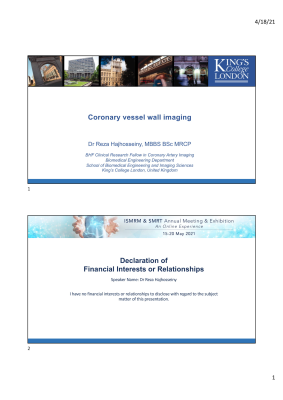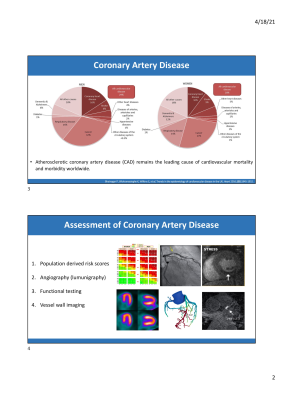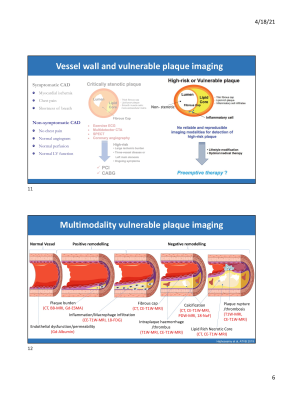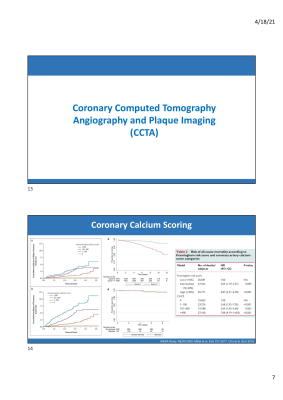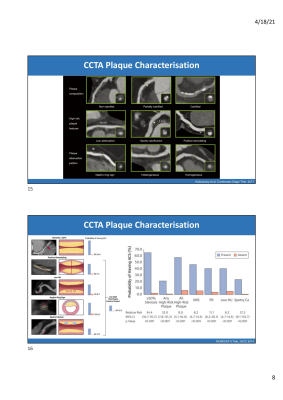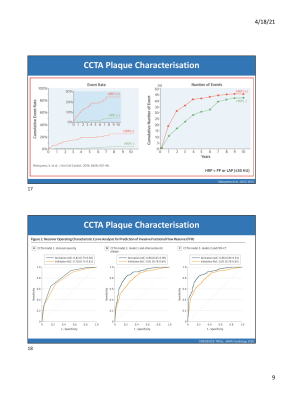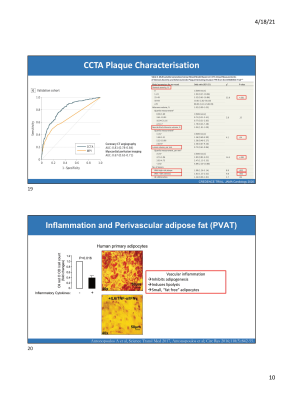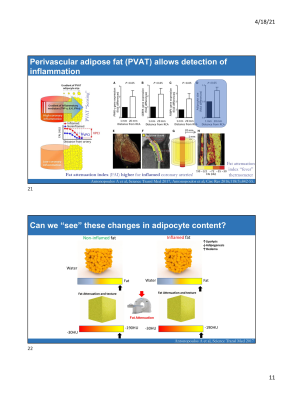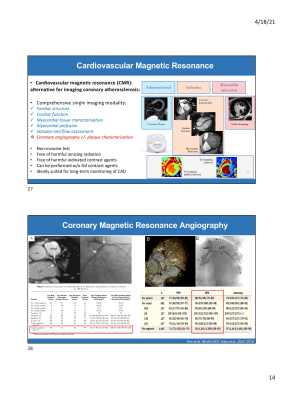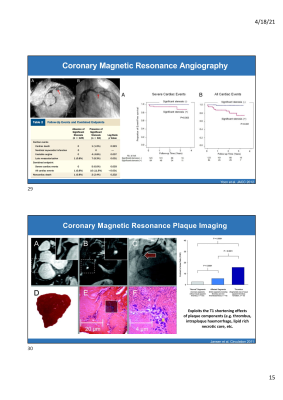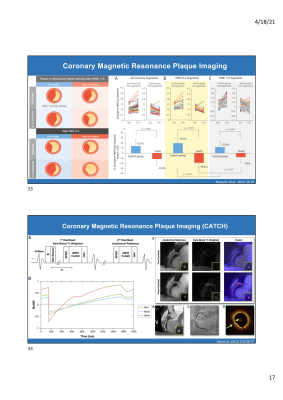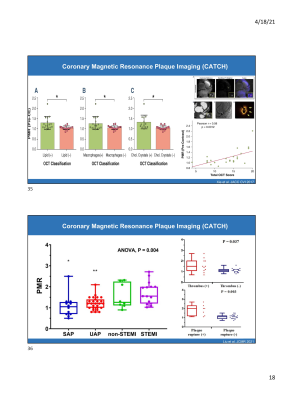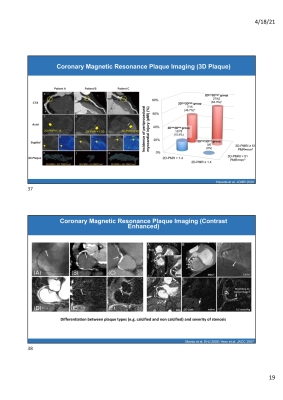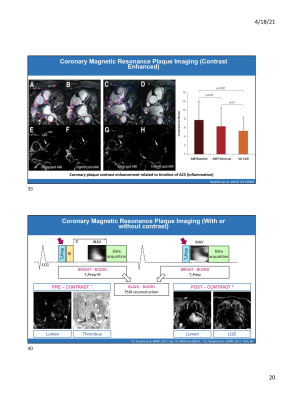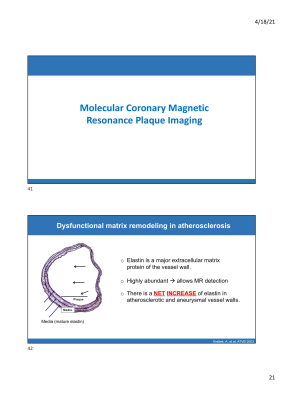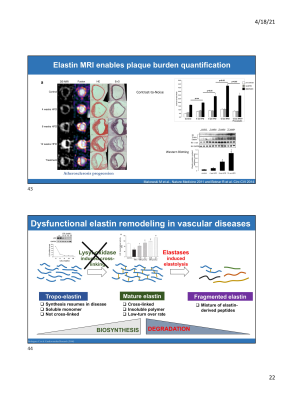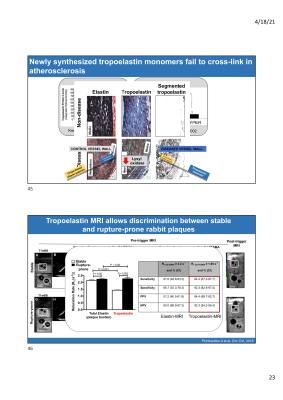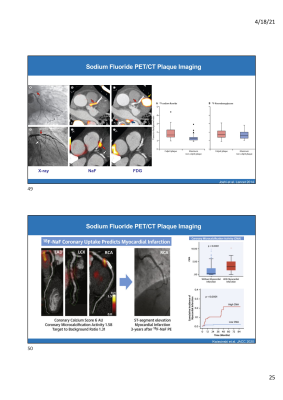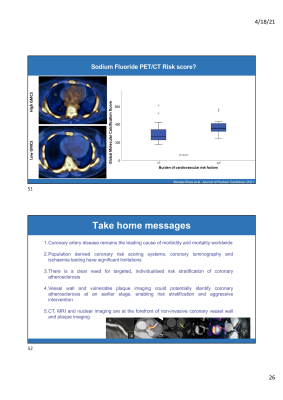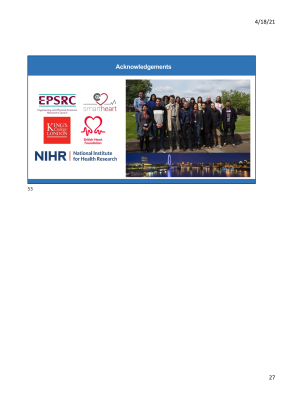Vessel Wall Imaging: Coronaries
1School of Biomedical Engineering and Imaging Sciences, King's College London, London, United Kingdom
Synopsis
Coronary artery disease (CAD) remains a significant cause of mortality and morbidity worldwide. Conventional population derived risk stratification tools, coronary luminography and functional assessment of CAD all have significant limitations in identifying individual patients most at risk of major adverse cardiac events. Coronary vessel wall imaging is a promising tool for the timely detection of coronary atherosclerosis. Advantages include early individualised risk stratification, bespoke and targeted therapeutical intervention and monitoring the response to treatment and disease progression. Cardiovascular magnetic resonance, computed tomography and nuclear imaging are all at the forefront of non-invasive coronary vessel wall and vulnerable plaque imaging.
